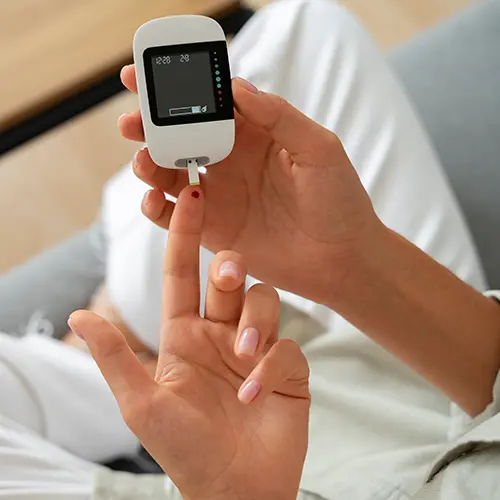Table of Contents
Early breast cancer detection is crucial, and mammography plays a pivotal role in this endeavor. Two primary techniques, 2D and 3D mammograms, are commonly used for screening. These X-ray-based methods aim to identify breast cancer before it exhibits noticeable symptoms. Knowing the distinctions and advantages of each empowers individuals to make informed decisions about their healthcare.
The disparity between 2D and 3D mammography lies in their imaging approach. While 2D mammograms provide single breast images, 3D mammograms offer multiple layered views. The latter yields clearer visualizations, reducing false positives, and proves particularly beneficial for those with dense breast tissue. Emphasizing early detection, 3D mammography significantly improves breast health outcomes and supports proactive healthcare choices.
In this article, we will talk about 2D mammograms and 3-D mammograms and the key differences between 2-D and 3D mammography technologies. In the final part, you can read about the cost and insurance perspective of these two mammography types.
2D Mammograms
2D mammograms continue to play a crucial role in breast cancer screening and provide the front and side views necessary to create individual breast images. This aids in the early detection of potential abnormalities, contributing to better treatment outcomes. While 3D mammography has made advances, 2D remains a valuable choice for routine scans and special medical considerations. Regardless of the type, regular mammograms contribute significantly to improving breast health and overall well-being.
Staying proactive with mammogram screenings is crucial for early detection that supports timely interventions and a better prognosis. Whether you prefer 2D or discover the benefits of 3D mammograms, prioritizing regular breast cancer screening is a vital step in maintaining optimal health. Consultation with healthcare providers can help individuals make informed decisions based on their unique needs and circumstances.
3D Mammograms
Mammograms remain vital for screening and detecting breast cancer early and ensuring effective treatment. They have an improvement in technology, compared to X-rays and breast imaging. Two prevalent options are 2D and 3D mammograms, each with distinct characteristics. Understanding these differences is essential:
Imaging Approach: 2D mammograms capture two images of each breast from different angles, while 3D mammograms produce multiple images for a 3D view, offering clearer insights into breast tissue.
Compression: Both methods require breast compression for optimal images, dispelling the notion that 3D mammograms avoid compression.
Advantages of 3D Mammograms: They may improve accurate breast cancer diagnosis, detect concealed small tumors, offer clearer images in dense breasts, and reduce false alarms in follow-up tests.
The American Cancer Society neutrally regards both 2D and 3D mammograms as viable screening options. Expert interpretation plays a crucial role; specialized breast radiologists ensure precise mammogram readings. Prioritizing regular mammograms empowers women to take charge of their breast health and supports early detection for improved medical care.
Key Differences Between 2D and 3D Mammography Technologies
In the realm of breast cancer screening, annual mammograms play a pivotal role and the choice of imaging technology can wield significant impact for diagnostic accuracy. About this, some of the disparities between 2D and 3-D mammography technologies can be lined up as below:
Breast Density: A significant challenge lies in differentiating dense breast tissue from cancerous growths, both of which appear white on mammograms. The 3D mammogram's multi-dimensional approach eases the process, particularly for women with dense breasts, who have a slightly higher risk of breast cancer.
Cancer Detection: Empirical evidence demonstrates the importance of 3D mammography's superior cancer detection capability. With the use of the tomosynthesis technique comes the chance to identify up to 40 percent more cancer than 2D mammograms.
Image Clarity: They work with different X-ray technologies based on digital mammograms, 2D or 3D mammography. 2D mammograms provide a two-dimensional view of the breast, while 3D mammograms' innovative tomosynthesis technique uses multiple low-dose X-ray images captured from various angles. Both 2D mammograms and 3D tomosynthesis are considered types of tomography, as they produce images of the breast in sections or slices.
2D vs. 3D Mammography: A Cost and Insurance Perspective
Choosing between 2D and 3D mammography for breast cancer screening is helpful for early detection. In addition, it is more economical. 3D mammograms offer superior image clarity, increased cancer detection rates, and reduced false alarms.
The medical community is moving towards adopting 3D mammography as the standard of care for breast cancer screening. The effort of science should be aimed at providing equal access to this advanced technology for all women. Providing women with optimal screening options can significantly increase their chances of early detection and better treatment outcomes.
The improved cancer detection rates and lower callback rates associated with 3D mammograms can potentially provide cost savings for insurance companies by enabling early detection and more effective treatment strategies.




















